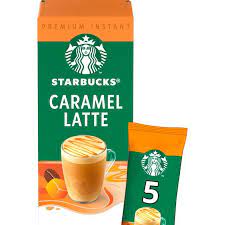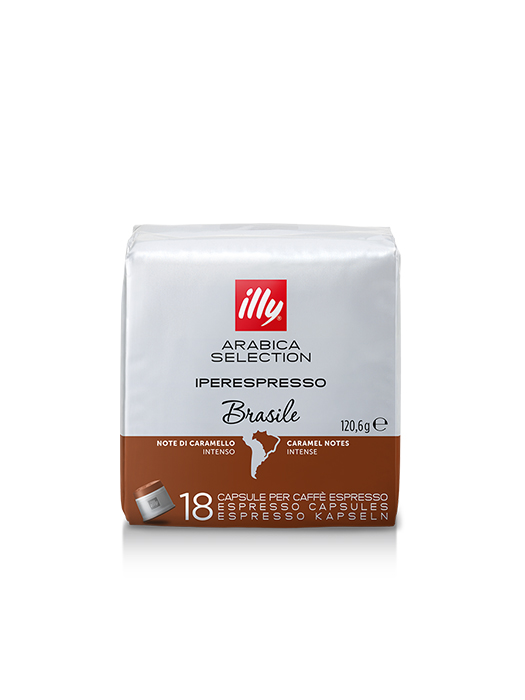Coffee is a beloved beverage made from coffee beans, which are the roasted fruit of the Coffea arabica bush. However, there are two common coffee bean types, C. arabica and C. robusta. These seeds are roasted, which makes it a process that transforms them into a consumable product; The roasted coffee beans are grounded into fine particles typically steeped in hot water before being filtered out, producing a cup of coffee.
Coffee has known to help fine-tune your focus and boost your energy levels. It contains many valuable nutrients, including riboflavin (vitamin B2), niacin (vitamin B3), magnesium, potassium, and various phenolic compounds or antioxidants.

HISTORY AND ORIGIN.
The plantation of coffee grown worldwide has heritage been traced back centuries to the ancient coffee forests on the Ethiopian plateau. The history of coffee is closely tied to food traditions around the Red Sea.
According to a legend, the goat herder Kaldi first discovered the potential of these beloved beans. He detected that goats who ate sure beans became lively shortly after the discovery and coffee processing. Coffee was first introduced to Italy, and Today, it is still a trendy drink among Italians. It was also drunk in Yemen by the 15th century. By the 16th century, it had spread to Persia (Iran), Turkey, and later to Europe. There were many coffee houses where people could drink and also socialized. In the 20th century, it became a much more global commodity, creating different coffee cultures worldwide. Consequently, Coffee became the second-most traded commodity in the world and has become a mainstay of the modern diet believed to have originated in Ethiopia. Coffee was used as a powerful force that forged a social revolution.
DIFFERENT TYPES OF COFFEE BEANS, COFFEE ROASTS, AND DRINKS.
In this article, there will be a discussion about the different coffee beans and coffee roast levels leading to the types of coffee drinks with incredible taste.
Here are the varieties of coffee beans which can be classified into four; Arabica, Robusta, Liberica, and Excelsa.
- Arabica; Arabica coffee is the most commonly grown coffee; it makes up around 60% of commercially grown coffee. Arabica plants have the best quality when grown at high altitudes in volcanic soils, with plenty of rainfall. The downside to Arabica plants is that they are more susceptible to disease. Arabica beans have an oval shape and are more significant than Robusta beans.
- Robusta: Robusta coffee is the second most common type of coffee, accounting for around 40% of coffee production. Robusta plants get their name because they are hardier than Arabica plants; they are less prone to disease and grow well in more expansive environments, including low altitudes. Robusta beans are smaller and rounder and have a higher concentration of caffeine than Arabica beans.
- Liberica coffee is relatively rare among commercial crops, accounting for less than 2% of the coffee produced worldwide. Liberica coffee grows taller than Arabica or Robusta, with trees reaching 20 meters high. Liberica beans are longer than other coffee types and have a unique hook shape at one end. Libera coffee is lower in caffeine than either Arabica or Robusta.
- Excelsa; Excelsa is considered a different type of coffee but has now been reclassified as a subtype of Liberica. Like its other counterpart, Liberica coffees, Excelsa grows on tall trees rather than shrubs. Excelsa beans have a unique teardrop shape but are smaller than Liberica beans.
COFFEE ROASTING LEVELS.
Coffee roast types refer to how long the overgrown coffee beans have been roasted. Each roast level will bring out different characteristics of the bean that make it suitable for other brewing methods
- Light Roast; Light roast beans have an aromatic flavor, with fruit and floral notes and good acidity. The beans will be pale brown, with no trace of oil on the surface. A light roast is used when you want the beans’ naturals to be retained, such as with delicate coffees. Fair roast coffees are best suited to pour-over brewing.
- Medium Roast; Medium roast beans have a richer taste with more sweetness, some nuttiness, and a hint of bitterness. A medium roast has less acidity than a light roast. The beans should be medium brown, with no trace of oil on the surface, but with a more pungent smell. NESPRESSO VERTUO ARONDIO is an example of Medium roast coffee.
- Medium-Dark Roast; Medium-dark roast beans have deep flavors of chocolate and nuts, with a bittersweet aftertaste. With medium-dark roasts, you’ll find little to no acidity. These beans are a dark brown, with some oil on the surface. A medium-dark roast is best for French press, Moka pot, or espresso brewing.
- Dark Roast; Dark roast beans have a pronounced bitterness, a heavy mouthfeel, and nutty, chocolatey or toasty flavors roast beans have no acidity. These beans are black, with visible oil on the surface. Therefore, they are the most popular choice for making espresso. Nespresso Vertuo IL CAFFE is a typical example of Dark roast coffee.
TYPES OF COFFEE DRINKS.
There are a few types of coffee drinks, but most types of coffee drinks comprise three common ingredients: espresso, steamed milk, and foam. Extra toppings can be added to each coffee type based on your customer’s unique preferences. Thus, Brewed coffee can be served as different coffee drinks, broadly classified into hot and cold beverages. The other things that differentiate coffee drinks include:
• The ratio of coffee to water.
• The ratio of coffee to milk.
• The addition of other ingredients.
THE VARITIES OF COFFEE DRINK
Here, are the following some of the most common coffee drink definitions and possible cup pairings you might bump into in a coffee shop.
- Espresso; An espresso coffee, also known as a short black, is a short, strong drink (about 30 ml) served in an espresso cup.
An espresso coffee has a ratio of :1 shot of espresso
The Cup: 2-4 oz. Espresso Cup.
2. Double Espresso: A double espresso may also be known as doppio, the Italian word for double. This drink is highly concentrated and intense.
Ratio: 2 shots of espresso
Cup: 3-4 oz. Demitasse Cup
3. RISTRETTO (or ESPRESSO RISTRETTO) :It is a very short shot of espresso (about 20 ml). Served in an espresso cup
4.COLD-BREW COFFEE: Cold Brew Coffee is a smooth, cold drink prepared by brewing freshly ground coffee in chilly water. Makes the cold Brew process; creates time up for heat.
5. Americano: Americanos are popular breakfast drinks, and they originated during World War II. At that time, Soldiers preferably add water to their coffee to extend their rations further. The water makes the espresso dilute while maintaining a high level of caffeine
6.Cappuccino : The classic cappuccino recipe is made with one part espresso, one part steamed milk and one part milk foam. People often make it with cinnamon or chocolate powder. It has a smooth, slightly sweet taste, with a lightness from the foam.
7.Cortado coffee : is a hot coffee produced from equivalent parts of espresso and steamed milk. Cortado is made by pulling a single shot of espresso into a small glass and then adding an equal amount of steamed milk with no foam. This coffee drink has a strong taste that is well-balanced by the milk.
8.Latte : Latte is one of the many popular milky coffee drinks. The combination of coffee and milk dates back to the 17th century, but the latte as we know it today originates in the 1950s. The latte consists of an espresso shot, topped with two parts of steamed milk and a small amount of milk foam. It has a sweeter, creamier taste than a cappuccino due to the higher ratio of steamed milk.
9.IRISH COFFEE: Classic coffee cocktail where Irish whiskey is mixed with filter coffee and topped with a thin layer of gently whipped cream.
10.Iced Coffee :Iced coffees have become very popular in the summertime in the United States. The recipes do have some variance, with some locations choosing to interchange milk with water in the recipe. Often, different flavoring syrups will be added per the customer’s preference.
COFFEE AND ITS UNIQUE BENEFITS.
Coffee has its unique benefits, thereby taking the right amount of coffee is good for you and it gives you some superficial benefits beyond your energy boosts. These are the top ways coffee can positively impact your health:
- Boost energy levels.
Coffee is rich in caffeine; a central nervous system stimulant known for its ability to fight fatigue and increase energy levels. The caffeine blocks the receptors of a neurotransmitter called adenosine, which raises levels of other neurotransmitters in your brain that regulate your energy levels, including dopamine.
- Supports brain health.
Although studies have mixed results, some research suggests that coffee may help protect against certain neurodegenerative disorders, including Alzheimer’s and Parkinson’s disease.
- Promote weight management.
Caffeine helps a healthy weight by reducing the risk of certain conditions linked to [being] overweight, like heart problems and altering fat storage.
Coffee supports weight management and may be linked to decreased body fat. The study also found that people who consumed coffee were more likely to be physically active.
- Boost Skin Health.
Coffee also has extras for your skin. Coffee beans contain caffeine and polyphenols like chlorogenic acids (CGA) that may have anti-inflammatory and antimicrobial products and protect from photoaging.
Using liquid coffee on the skin or as a ground scrub may help skin problems like eczema, psoriasis, and acne.
- It lowers the risk of type 2 diabetes.
Type 2 diabetes is a chronic disease that affects how the body operates sugar. When blood sugar remains high, it can lead to potentially serious health problems. Consuming coffee may help reduce the risk of developing this condition.
FREQUENTLY ASKED QUESTIONS.
- What happens if you drink coffee every day?
Coffee contains caffeine. Therefore, Consuming too much caffeine can cause jitteriness, anxiety, heart palpitations, and even exacerbated panic attacks. This beverage has its side effect. It is advisable if you are sensitive to caffeine and tend to become overstimulated that you may need to avoid coffe
2.What are the side effects of coffee?
Coffee containing caffeine can induce insomnia, nervousness, restlessness, stomach upset, nausea and vomiting, increased heart and breathing rate, and different side effects. Caffeinated coffee is Maybe UNSAFE when taken by mouth for a long time or in high doses (more than 4 cups per day).
3.Which coffee is best for health?
Studies show that Arabica dark roast is the healthiest coffee for people who want to restrain from caffeine without drinking decaf. However, Blonde Robusta, on the other hand, will give you the most significant buzz.
Conclusion.
In conclusion, coffee is a better source of caffeine than most energy drinks because it provides a stimulating effect without putting an individual at risk of a health problem; the extensive research conducted over the years about coffee help to affirm that viewpoint. Although the negative effects of coffee clearly indicate that one should limit caffeine consumption. Visit to check for more varieties of coffee.



2 thoughts on “COFFEE AND TYPES”
Thanks for the info
Everything is very open with a really clear clarification of the issues. It was truly informative. Your site is very helpful. Many thanks for sharing!